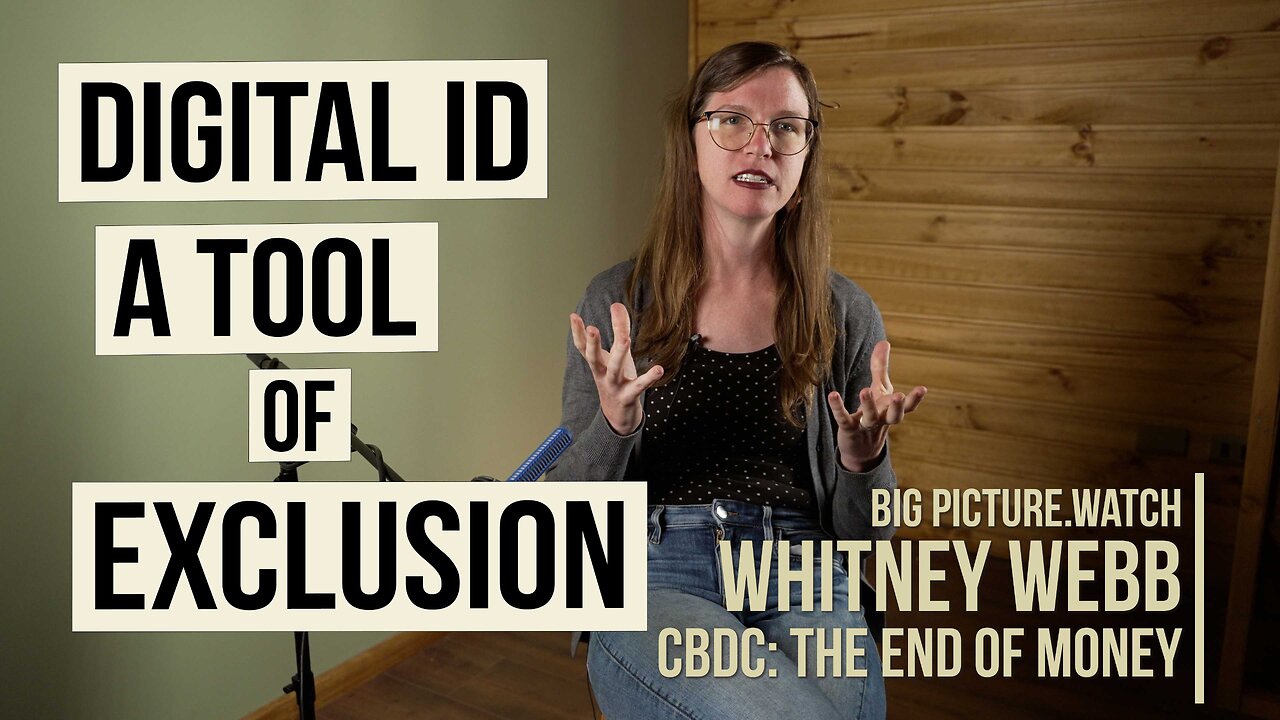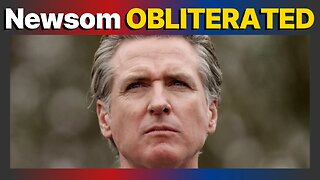Premium Only Content

Digital ID: A Tool of Exclusion | Whitney Webb
I traveled to Chile to interview Whitney Webb, the contributing editor to Unlimited Hangout and formerly the senior investigative reporter at MIT Press News. Webb has honed a reputation as one of the most rabid researchers in independent journalism today.
This interview was shot in the making of the documentary CBDCs: The End of Money.
https://bigpicture.watch/product/cbdc-the-end-of-money/
Sign up for the Big Picture Newsletter to hear about our interviews and films:
https://bigpicture.watch/newsletter
In this eye-opening interview, Webb discusses how there is a global push by governments worldwide to implement digital IDs based on biometrics, and how digital IDs are required to make CBDCs work.
"They want to move not just to a cashless society, but a cashless and cardless society. The goal is to have you pay with your face or pay with your biometrics or your palm of your hand. This is already being rolled out at Amazon-owned entities. JP Morgan is piloting it for their customers, and I'm sure at some point if you don't want to use your biometrics for those purposes, then your bank will be like, ‘Sorry… you can't bank with us.’"
Digital IDs are a key part of the United Nations "Sustainable Development Goals", or SDGs, also known as Agenda 2030. The specific part of the Sustainable Development Goals dealing with digital IDs is within SDG 16, which they claim is about building “peaceful and inclusive societies.” The primary organization pushing this agenda is ID2020 and the Digital Impact Alliance.
These U.N. and transnational entities claim the lack of digital ID is preventing people—mainly the world's poor—from accessing essential services, whether it's banking, education, or health care. They call this the "Identity Gap".
Promoters like Bill Gates and the U.N. claim digital IDs will enhance "inclusion," but the systems are inherently exclusionary.
-
 25:49
25:49
GritsGG
8 hours agoRank 1 Player Crushes Solo Lobby!
30 -
 35:14
35:14
The Pascal Show
9 hours agoHE'S GONNA SUE COLDPLAY?! Astronomer HR Resigns & Ex-CEO Set To Sue Coldplay Over Kiss Cam Drama
25 -
 LIVE
LIVE
Lofi Girl
2 years agoSynthwave Radio 🌌 - beats to chill/game to
247 watching -
 19:18
19:18
DeVory Darkins
5 hours ago $16.19 earnedDemocrat non-profit SCAM EXPOSED as Trump OBLITERATES Newsom
23.4K53 -
 23:58
23:58
Stephen Gardner
6 hours ago🔥Obama THROWS Adam Schiff under the bus to obstruct Trump!
17.5K102 -
 38:44
38:44
The Why Files
4 days agoProject Ancient Arrow | The NSA's Secret War Against Our Future
52.1K73 -
 2:36:06
2:36:06
Barry Cunningham
8 hours agoPRESIDENT TRUMP IS TRULY USHERING IN THE GOLDEN AGE OF AMERICA! CAN YOU FEEL IT?
109K44 -
 3:47:25
3:47:25
SynthTrax & DJ Cheezus Livestreams
3 days agoFriday Night Synthwave 80s 90s Electronica and more DJ MIX Livestream 2K Celebration SPECIAL EDITION 530pm PST / 830pm EST
46.8K5 -
 2:21:54
2:21:54
VapinGamers
5 hours ago $2.97 earnedDestiny 2 - Edge of Fate Legendary Run Part 3 - !rumbot !music
24.9K -
 2:04:25
2:04:25
TimcastIRL
7 hours agoTrump DOJ Gives Ghislaine Maxwell Limited IMMUNITY As She Rats On 100+ People | Timcast IRL
227K167